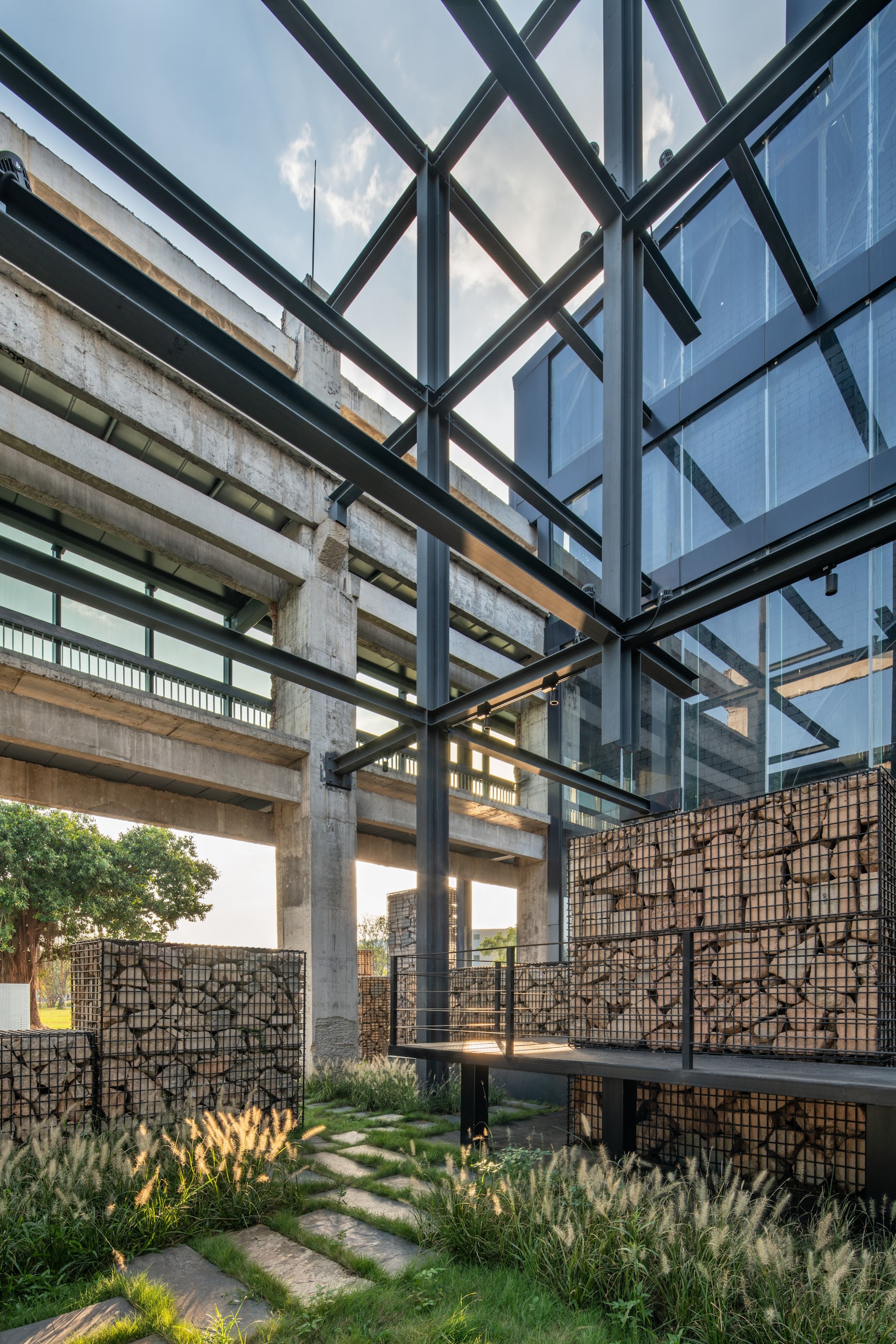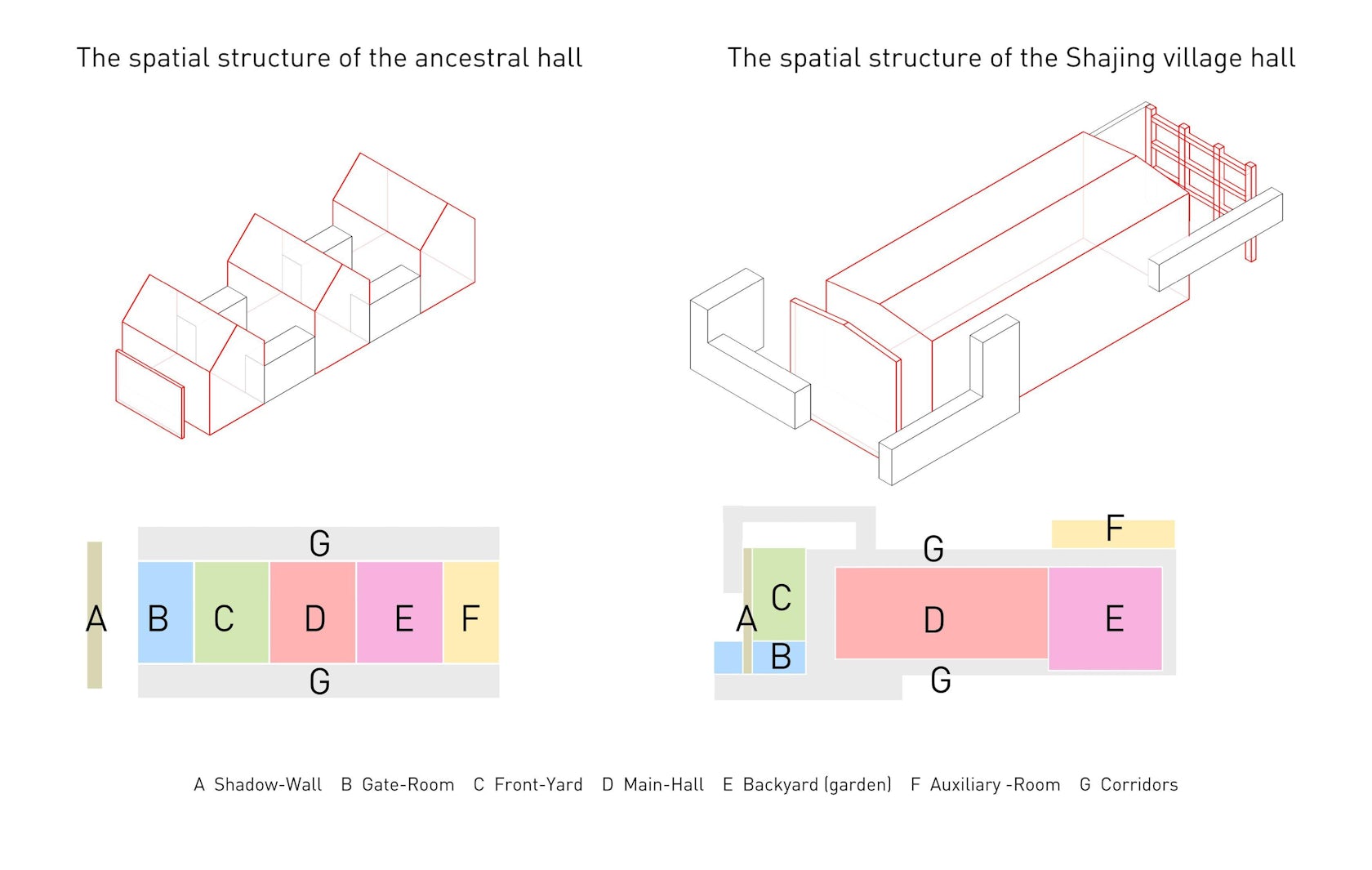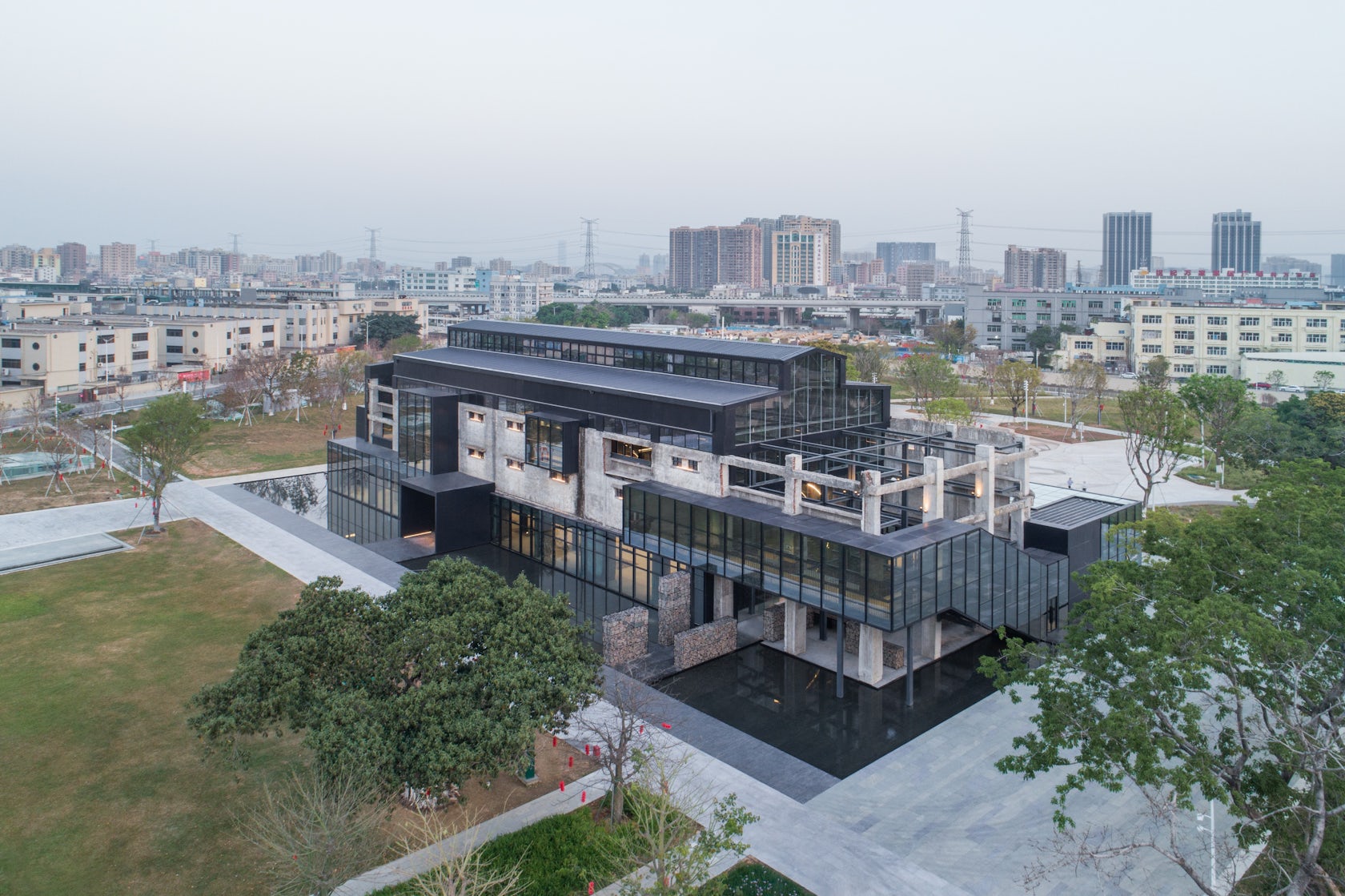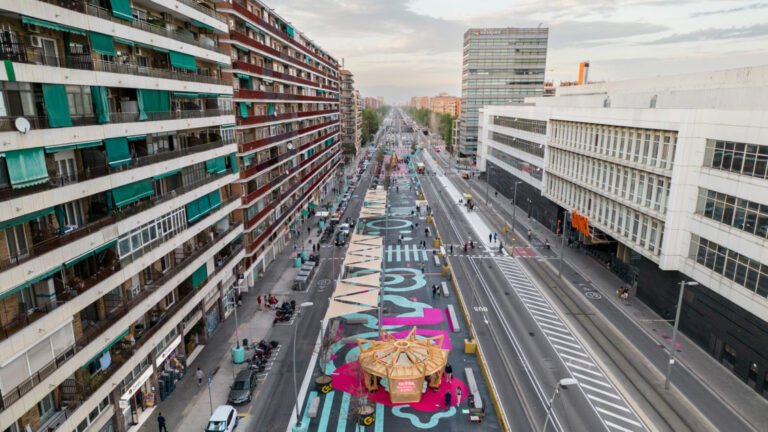Shajing Village Hall // ARCity Office
Text description provided by the architects.
The Gangtou Diesel Power Plant was built in the 1980s adjacent to the Shajing Ancient Fair, Shenzhen, as part of the village run industrial area of Shajing Gangtou, supplying electricity to the village of Shajing and neighbouring urban villages in the early years of reform and development. The plant was abandoned over a decade ago.

© ARCity Office

© ARCity Office
The ruins of the power plant have become dangerous due to age and disrepair. In order to build the Bao’an Oyster Township Lake Park, the power plant ruins and the surrounding buildings are scheduled to be completely demolished in October 2019.
The architects discovered this power plant ruin and were impressed by its unique beauty as a trace of time, and wanted to realise the ‘Rejuvenation of Power Plant Ruin’ through the design.

© ARCity Office

© ARCity Office
The Shajing Village Hall is a new way to preserve and revitalise the ruins as industrial heritage, giving them new value. The main design concept for the Shajing Village Hall is based on the concept and methodology of sustainable design, absorbing the cultural characteristics of the local space and transforming the old plant into a new ancestral hall – i.e.

© ARCity Office

© ARCity Office
a new public space with a broader civic character – through abstract transformation.Regenerated from the ruins, the Shajing Village Hall serves as a public space open to Shajing villagers and Shenzhen citizens, providing functions such as creativity, leisure and services. On the other hands, Shajing Village hosts a variety of traditional cultural activities with local characteristics, such as village history exhibitions, folklore ceremonies, ancestor memorials, family deliberations, cultural exchanges, and so on.

© ARCity Office

© ARCity Office
In a sense, the Shajing Village Hall, which is closely surrounded by the Maozhou River, is like a symbolic and spiritual space. Shajing Village was in desperate need of a ‘new ancestral hall’ that could accommodate the lifestyles of young people. As most of the old ancestral halls in the village were unused, in a state of disrepair and awaiting repair, with only the old people left to look after them.

© ARCity Office

© ARCity Office
Shajing Village Hall has transformed the perception of the ancestral hall from a power plant ruin to a public space. The renovated building acts as a spatial medium to attract young people to gather here and focus on the old village which has been weakened, and where traditional local cultures such as lion dance, mantis boxing and Cantonese opera can be gradually revived.
Shajing Village Hall has created a long lost cultural cohesion in the local community.

© ARCity Office

© ARCity Office
In a sense, we do not only need to transform an old factory to make it useful again, but also to rebuild the spiritual world of individuals and communities on top of all the ruins of the modern city, thus transforming the ‘material factory’ into a ‘spiritual factory’..

© ARCity Office

© ARCity Office
Shajing Village Hall Gallery


